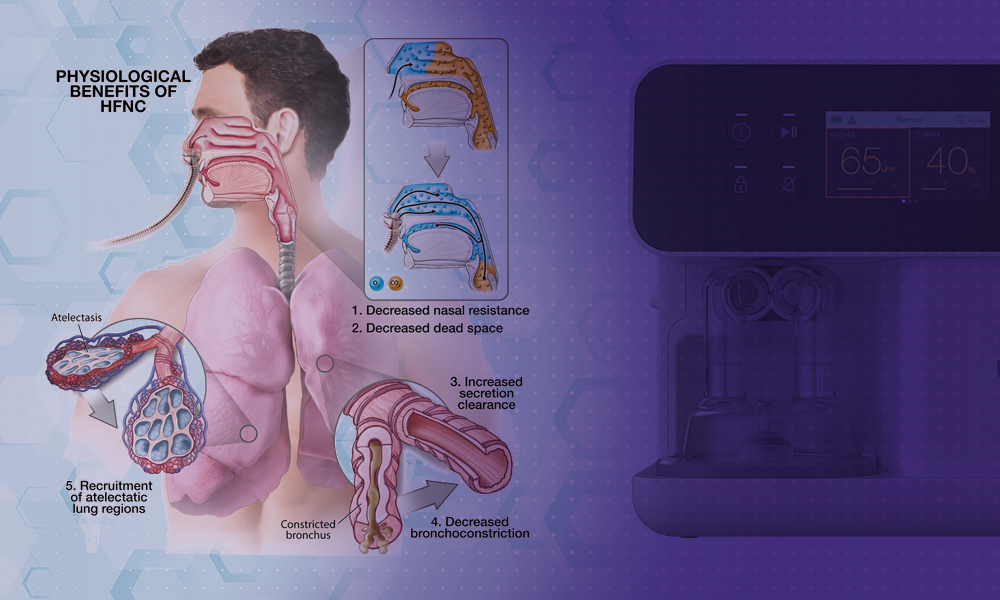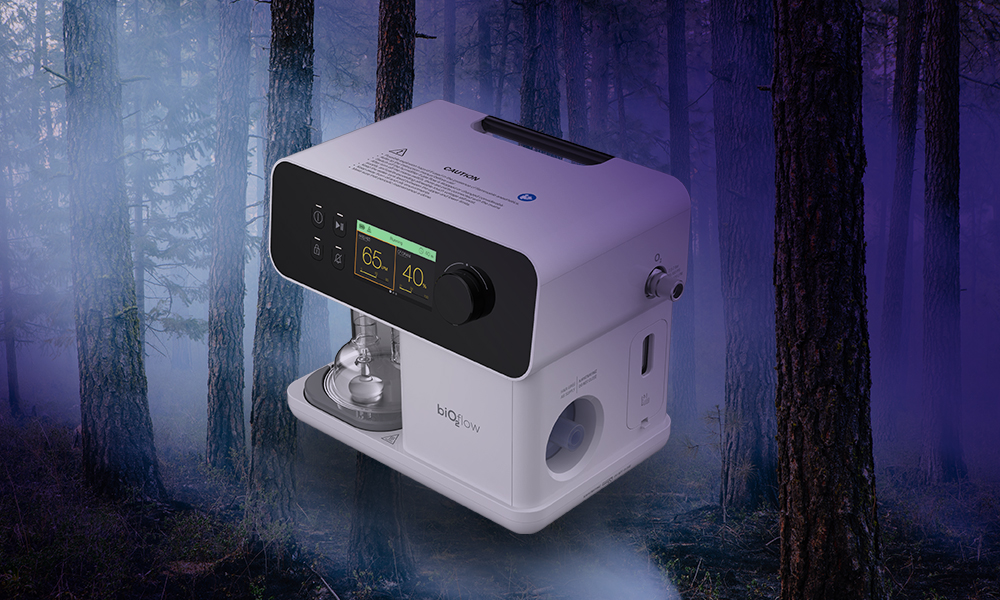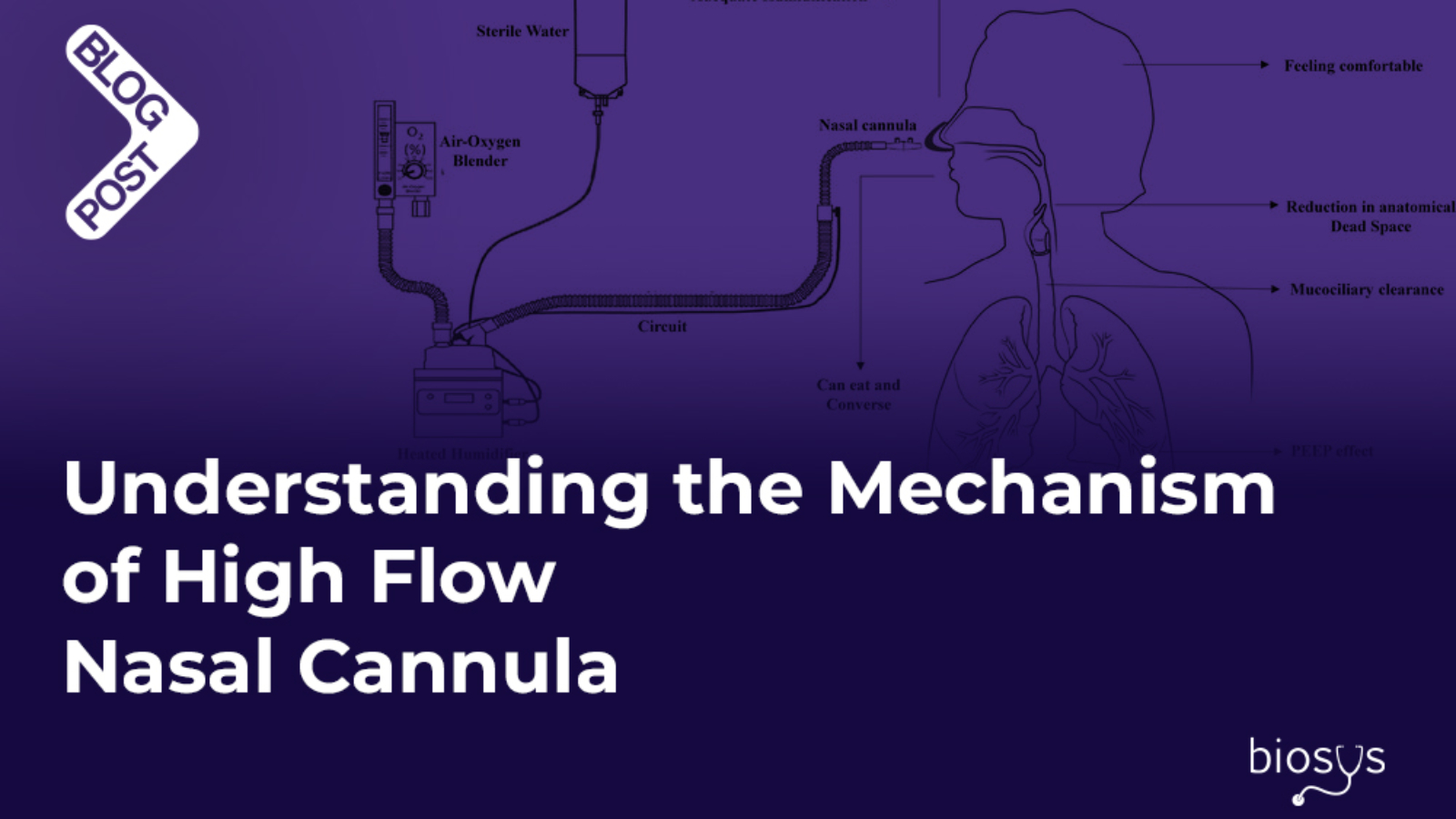Day in and day out, the world of medical interventions keeps evolving, and advancements are constantly pushing the boundaries of what is possible. However, with various developments in the medical field, the high-flow nasal cannula remains an outstanding innovation that has revolutionized respiratory support – simply because it’s a beneficial novel oxygen delivery device whose method of functioning provides some positive impact over conventional oxygen systems.
Moreover, it’s best employed when it comes to administering a prescribed fraction of oxygen at a very high rate without causing any form of discomfort to the patient. Therefore in this article, we’ll be examining the main mechanism behind high-flow nasal cannula, without exempting the clinical applications and the benefits associated with it.

What Is High-Flow Nasal Cannula (HFNC) Therapy?
Before anything, it’s crucial to understand the essence of a High-flow nasal cannula and some basic characteristics that differentiate it from conventional oxygen therapy.
Simply put, a high-flow nasal cannula is a device that uses nasal prongs to supply 100% heated and humidified oxygen at a high-flow rate of up to 60 liters per minute. Its mechanism of action is not like the traditional oxygen therapy such as face masks or nasal cannula. In that, HFNC is capable of supplying a combination of air and oxygen at flow rates higher than the patient’s peak inspiratory flow, thereby making it an effective therapy for people battling with chronic obstructive pulmonary disease (COPD) and acute hypoxemic respiratory failure.
In addition, a high-flow nasal cannula serves as a unique and effective tool in respiratory care because of its functional residual capacity enhancement, precise oxygen delivery, and dead space washout – all of which cannot be achieved through traditional oxygen therapy.

How Does High-Flow Nasal Cannula Work?
High-flow nasal cannula therapy is a new advancement in the medical world, and not everyone is familiar with its working principle. However, this section will focus on how HFNC works to keep all health workers informed and prevent blunders in health care provision.
For proper and long-term understanding, we’ll be using this mnemonic “HIFLOW” to decode the working mechanism of high-flow nasal cannula, and it thus goes like this;
- H: humidification and heating
- I: inspiratory demands
- F: functional residual capacity
- L: lighter
- O: oxygen dilution
- W: washout effect
Now, let’s take them one after the other:
Humidification and heating
Yes, the oxygen usually given out from high-flow nasal cannula is completely humidified and heated to the body temperature. As a result, there is little or no chance of mucosal dryness or any form of airway damage – a common problem that mainly arises with the traditional oxygen therapy method.
Moreover, HFNC does not only improve mucociliary clearance, but it also facilitates the removal of secretions from the airways through the warm and humid air it gives off.
Inspiratory demands
Another obvious benefit that’s often associated with a high-flow nasal cannula is its ability to provide extremely high gas flow rates to meet a patient’s inspiratory flow demands. This is very important, especially when dealing with a patient suffering from acute respiratory failure whose peak inspiratory fluxes are capable of increasing tremendously.
When a situation like this occurs i.e. increase in PIF rates, it’s possible that the normal nasal cannula will not be able to provide enough support and that’s where flow nasal cannula comes in– to match patient peak inspiratory flow demands.
Functional residual capacity
There is no doubt that a high-flow nasal cannula is capable of increasing a patient’s functional residual volume (FRC) or lung volume at the end of respiration. Their usage appears to result in increased FRC and alveolar recruitment.
Besides, HFNC also functions to increase intrathoracic pressure, maybe as a result of additional positive end-expiratory pressure (lung pressure); although it’s unclear if these outcomes could be explained by another mechanism.
Lighter
Unlike the non-invasive continuous or bilevel positive pressure ventilation (CPAP or BPAP) with a tight-fitting mask that makes patients uncomfortable, a high-flow nasal cannula is different as it promotes patient comfort. Additionally, its usage is preferable to the standard nasal cannula because it gives off heated and humidified gasses that won’t dry out the mucosa like regular oxygen therapy.
In short, a high-flow nasal cannula reduces the patient’s respiratory rate and work of breathing by providing a comfortable and uninterrupted flow of warm and humidified gas.
Oxygen dilution
This is a phenomenon that occurs if the patient’s inspiratory flow demands are not met or exceeded. This usually happens in patients with acute respiratory failure whose breathing patterns are always higher, and it’s impossible to deliver higher amounts of Fi02 effectively to them via a standard nasal cannula.
So to limit the consequences of oxygen dilution, it’s necessary not only to equal but also exceed the patient’s minute ventilation and inspiratory needs. And this is only achievable through the use of a high-flow nasal cannula.
Washout effect
The washout effect of a high-flow nasal cannula simply means the removal of anatomical dead space and reducing the rebreathing of exhaled carbon dioxide (Co2) in the upper airways.
For that reason, HFNC improves the efficiency of gas exchange and helps to prevent hypercapnia– a physical condition of having the presence of an abnormally high level of carbon dioxide in the circulating blood.

Components and Settings of High-Flow Nasal Cannula System
High-flow nasal cannula system is made up of different components, all of which have a unique function that contributes to the setup. HFNC comprises a heated humidifier, a single heated circuit, an air oxygen blender, as well as a customized nasal cannula.
The heated humidifier is the one responsible for the ideal moisture and temperature levels, while the air/oxygen blender ensures perfect control over the Fio2 (fraction of inspired oxygen). Meanwhile, the heated circuit helps in reducing condensation and heat loss and the nasal cannula is made to fit comfortably in the patient’s nasal cavity, ensuring that the nasopharynx is receiving a high-flow of gas directly.
Physiological Effect of High-Flow Nasal Cannula Therapy (2)
High-flow nasal cannula therapy has numerous Physiological effects on the cardio-pulmonary system when delivered through a nasal interface.
Some of these effects include improved oxygenation, mucociliary clearance, better lung compliance, and reduced respiratory rate. In addition, high-flow nasal cannula may have positive effects on cardiac function, such as improving stroke volume and lowering the myocardial oxygen demand.
Indications and Contra-indications for High-flow Nasal Cannula Use
High-flow nasal cannula therapy is an efficient and versatile therapy used in managing various respiratory conditions. However, like every other medical intervention, HFNC therapy has specific indications where it’s recommended and Contra-indications where caution or alternative therapies are prescribed. Knowing these is very crucial in optimizing patient outcomes, and the summary is given below:
Indications/clinical applications
- Acute hypoxemic respiratory failure: These are respiratory complications such as pneumonia, acute respiratory distress syndrome (ARDs), etc, which are characterized by low arterial oxygen levels (Pao2). People battling with these conditions are often recommended to get high-flow nasal cannula therapy.
- Preoxygenation and apnea oxygenation: High-flow nasal cannula therapy is mostly used in critically ill patients for Preoxygenation before intubation and during episodes of apnea. Moreover, its ability to administer high oxygen concentration at a very fast rate and sustain oxygenation throughout intubation efforts helps in reducing the risk of desaturation and enhances the effectiveness of intubation. Others include:
- End-of-life care
- Post-extubation respiratory support
- Respiratory distress in pediatrics
Contra-indications
- Severe respiratory acidosis
- High risk of aspiration
- Inability to tolerate mask interface
- Hemodynamic instability
- Facial trauma or surgery
Benefits of High-Flow Nasal Cannula Therapy
The unique mechanism of action of high-flow nasal cannula therapy and its patient-friendly interface offers several benefits over the traditional oxygen therapy method. Below are some of the benefits that can be gotten from using HFNC therapy:
- Reduced work of breathing: High-flow nasal cannula therapy reduces the work of breathing and alleviates respiratory discomfort through the provision of positive airway pressure and washing out of anatomical dead space. Thereby improving patient comfort and compliance.
- Improved oxygenation: Another edge of this therapy on the traditional oxygen therapy method is that it delivers warm and humidified oxygen at high-flow rates, thus helping in enhancing oxygenation and arterial oxygen levels in patients with respiratory failure.
- Enhanced mucociliary clearance: The warm and humid air given off from the high-flow nasal cannula helps to clear the airway’s secretions by enhancing mucociliary clearance and lowering the possibility of airway blockage.
- Safety profile: When compared with other alternative non-invasive breathing techniques, high-flow nasal cannula therapy offers a minimal risk of pain or barotrauma(trauma due to pressure) and a more advantageous safety profile.

Considerations for Implementing High-Flow Nasal Cannula Therapy
Effective implementation of high-flow nasal cannula therapy requires careful consideration of various factors, some of which are summarized below:
- Patient selection: Before high-flow nasal cannula therapy will be recommended, it’s important to assess the patient’s condition first including the respiratory rate, oxygenation status, and the intensity of respiratory complications.
- Staff training and education: High-flow nasal cannula therapy is a new invention in the medical world, it’s therefore necessary to provide comprehensive training to health care staff, most especially the bedside nurses on the principles, Indications, Contra-indications, and adequate implementation of this therapy.
- Equipment setup: HFNC is made up of different components which have been discussed above. So before proceeding with this therapy, ensure the availability of appropriate high-flow nasal cannula equipment, including the heated humidifier, single heated circuit, air/oxygen blender, and the nasal cannula interface.
- Adverse effects management: As effective as this therapy is, there are some adverse effects or complications associated with it such as pneumothorax, nasal trauma, barotrauma, etc. There should be an established protocol for managing them in case they occur.
Respiratory Support From Biosys Biomedical
Some respiratory complications can’t be tackled with a standard nasal cannula, hence the invention of a more advanced and effective nasal cannula – high-flow nasal cannula.
High-flow nasal cannula therapy works by combining positive airway pressure, warmth, humidification, and washout of anatomical dead space. These factors work together to increase patient comfort, enhance oxygenation, and also reduce breathing effort. However, being a new development for respiratory support implies that not every personnel can be trusted with it.
Looking for who to trust? Worry less, Biosys Biomedical got you covered– when it comes to respiratory support, we offer nothing but the best and the best.
References
- https://rebelem.com/high-flow-nasal-cannula-hfnc-part-1-how-it-works/
- https://breathe.ersjournals.com/content/16/4/200224#:~:text=Key%20points%201%20HFT%20involves%20active%20heating%20and,dead%20space%20washout%20and%20reduced%20work%20of%20breathing
- https://www.ncbi.nlm.nih.gov/pmc/articles/PMC6358040/
- https://rc.rcjournal.com/content/61/4/529
- https://typeset.io/questions/what-are-the-safety-considerations-of-using-high-flow-nasal-f8j74v2z4u


Add a Comment